Potřebujeme váš souhlas k využití jednotlivých dat, aby se vám mimo jiné mohly ukazovat informace týkající se vašich zájmů. Souhlas udělíte kliknutím na tlačítko „OK“.
ASTM D4718-87(2007)
Standard Practice for Correction of Unit Weight and Water Content for Soils Containing Oversize Particles
Automaticky přeložený název:
Standardní praxe pro korekci jednotky hmotnost a obsah vody pro půdy obsahujících Nadměrná Částice
NORMA vydána dne 1.9.2007
Informace o normě:
Označení normy: ASTM D4718-87(2007)
Poznámka: NEPLATNÁ
Datum vydání normy: 1.9.2007
Kód zboží: NS-28293
Počet stran: 3
Přibližná hmotnost: 9 g (0.02 liber)
Země: Americká technická norma
Kategorie: Technické normy ASTM
Kategorie - podobné normy:
Zemní práce. Hloubicí práce. Budování základů. Podzemní práce
Anotace textu normy ASTM D4718-87(2007) :
Keywords:
oversize particles, unit weight, water content, ICS Number Code 93.020 (Earth works. Excavations. Foundation construction. Underground works)
Doplňující informace
| Significance and Use | ||||||||||||||||||||
|
Compaction tests on soils performed in accordance with Test Methods D 698, D 1557, and D 4253 place limitations on the maximum size of particles that may be used in the test. If a soil contains cobbles or gravel, or both, test options may be selected which result in particles retained on a specific sieve being discarded (for example the No. 4 (4.75-mm) or the ¾-in. (19-mm) or other appropriate size), and the test performed on the finer fraction. The unit weight–water content relations determined by the tests reflect the characteristics of the actual material tested, and not the characteristics of the total soil material from which the test specimen was obtained. It is common engineering practice to use laboratory compaction tests for the design, specification, and construction control of soils used in earth construction. If a soil used in construction contains large particles, and only the finer fraction is used for laboratory tests, some method of correcting the laboratory test results to reflect the characteristics of the total soil is needed. This practice provides a mathematical equation for correcting the unit weight and water content of the tested finer fraction of a soil, to determine the unit weight and water content of the total soil. Similarly, this practice provides a means for correcting the unit weight and water content of field compacted samples of the total soil, so that values can be compared with those for a laboratory compacted finer fraction. Note 1—When this practice is used for construction control, the using agency should specify whether the maximum unit weight value used for reference is the unit weight including oversize fraction or the unit weight of the finer fraction. Calculated values of percent compaction based on this correction practice will vary depending on which unit weight value is used for reference. |
||||||||||||||||||||
| 1. Scope | ||||||||||||||||||||
|
1.1 This practice presents a procedure for calculating the unit weights and water contents of soils containing oversize particles when the data are known for the soil fraction with the oversize particles removed. 1.2 The practice also can be used to calculate the unit weights and water contents of soil fractions when the data are known for the total soil sample containing oversize particles. 1.3 This practice is based on tests performed on soils and soil-rock mixtures in which the portion considered oversize is that fraction of the material retained on the No. 4 sieve. Based on these tests, this practice is applicable to soils and soil-rock mixtures in which up to 40 % of the material is retained on the No. 4 sieve. The practice also is considered valid when the oversize fraction is that portion retained on some other sieve, such as the 3/4-in. sieve, but the limiting percentage of oversize particles for which the correction is valid may be lower. However, the practice is considered valid for materials having up to 30 % oversize particles when the oversize fraction is that portion retained on the 3/4-in. sieve. 1.4 The factor controlling the maximum permissible percentage of oversize particles is whether interference between the oversize particles affects the unit weight of the finer fraction. For some gradations, this interference may begin to occur at lower percentages of oversize particles, so the limiting percentage must be lower for these materials to avoid inaccuracies in the computed correction. The person or agency using this practice shall determine whether a lower percentage is to be used. 1.5 This practice may be applied to soils with any percentage of oversize particles subject to the limitations given in 1.4 and . However, the correction may not be of practical significance for soils with only small percentages of oversize particles. The person or agency specifying this practice shall specify a minimum percentage of oversize particles below which the practice need not be applied. If a minimum percentage is not specified, 5 % shall be used. 1.6 This practice may not be applicable to soil-rock mixtures which degrade under field compaction. 1.7 This practice offers a set of instructions for performing one or more specific operations. This document cannot replace education or experience and should be used in conjunction with professional judgment. Nat all aspects of this practice may be applicable in all circumstances. This ASTM standard is not intended to represent or replace the standard of care by which the adequacy of a given professional service must be judged, nor should this document be applied without consideration of a project's many unique aspects. The word "Standard" in the title of this document means only that the document has been approved through the ASTM consensus process. |
||||||||||||||||||||
| 2. Referenced Documents | ||||||||||||||||||||
|
Podobné normy:
Historická
1.11.2011
Historická
1.3.2008
Historická
1.5.2012
Historická
1.7.2008
Historická
15.11.2013
Historická
1.7.2008
Doporučujeme:
Aktualizace technických norem
Chcete mít jistotu, že používáte pouze platné technické normy?
Nabízíme Vám řešení, které Vám zajistí měsíční přehled o aktuálnosti norem, které používáte.
Chcete vědět více informací? Podívejte se na tuto stránku.


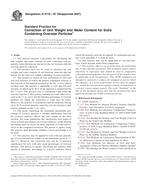
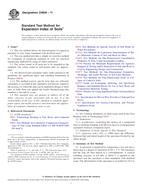 ASTM D4829-11
ASTM D4829-11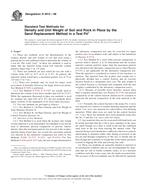 ASTM D4914-08
ASTM D4914-08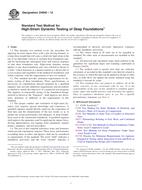 ASTM D4945-12
ASTM D4945-12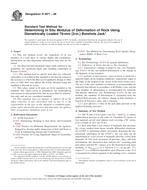 ASTM D4971-08
ASTM D4971-08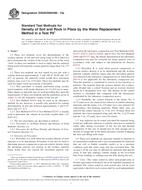 ASTM D5030/D5030M-13..
ASTM D5030/D5030M-13..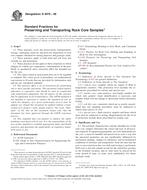 ASTM D5079-08
ASTM D5079-08
 Cookies
Cookies
